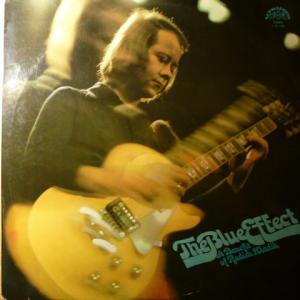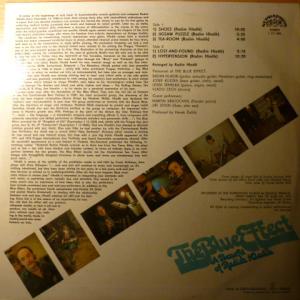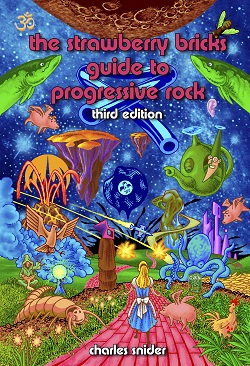Strawberry Bricks Entry:
The Blue Effect were another impressive progressive rock band to come from behind the Iron Curtain. The band’s name-the so-called “blue book” that postponed the members’ military conscription-was changed to Modry Efekt during the post-Prague Spring “normalization.” Formed by the Prague-born guitarist, Radim Hladík spent the 60s in a succession of beat-era groups, most famously with “bigbít” legends The Matadors. By 1968, he and vocalist Vladimír Mišík found their musical calling in The Blue Effect, adding drummer Vladimír Čech and bassist Jiří Kozel. Their debut album, Meditace (later released for export as Kingdom of Life in 1972), still, however, had a foot firmly in 60s R&B. The band’s next album, Coniunctio (“The Link”), recorded with Martin Kratochvíl’s Jazz Q, played to their jazz roots; it’s a direction they would further over their next two albums, Nová Syntéza 1 & 2 (“New Synthesis”), while adding keyboardist Lešek Semelka and bassist Josef Kůstka to the group. The quartet then recorded the band’s instrumental fifth album, released in 1974 with an export title of A Benefit of Radim Hladík (it would also see release in 1975 as Radim Hladík & Modry Efekt). With Hladík firmly at the helm writing and arranging, the music completely turned progressive. A formidable guitarist, his technique is world-class: blistering, technical and relentless, but also capable of deep melodicism, as evidenced on “Tearoom” (“Čajovna”). “Jigsaw Puzzle” (“Skládanka”) features flautist Jiří Stivín, but rides the jumpy beat punctuated by Kůstka’s bass. Hladík doubles up guitar lines to great effect throughout: witness the melancholic “Lost and Found” (“Ztráty a nálezy”) or the darker “Hypertension” (“Hypertenze”). Now known as M. Efekt, the band’s next album, 1977’s excellent Svitanie (“Dawn”), saw release on the Slovak label Opus. New keyboardist Oldřich Veselý and bass player Fedor Frešo completed the “federal” Czechoslovakian lineup. The Blue Effect carried on into the early 80s, but life in a rock band during that era in Czechoslovakia’s history was difficult. It’s a shame his music never really left his homeland, he’s certainly on par with the celebrity of Alvin Lee or Jan Akkerman. Hladík though found steady work as a session musician with the national radio station, and in a folk duo with Jaroslav Hutko.



